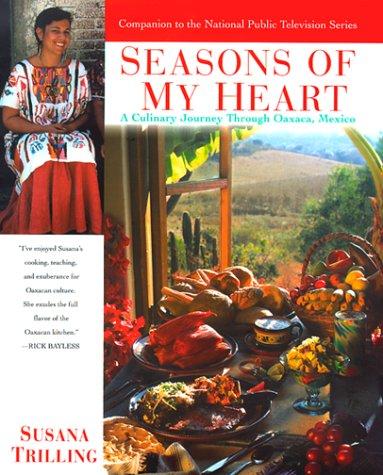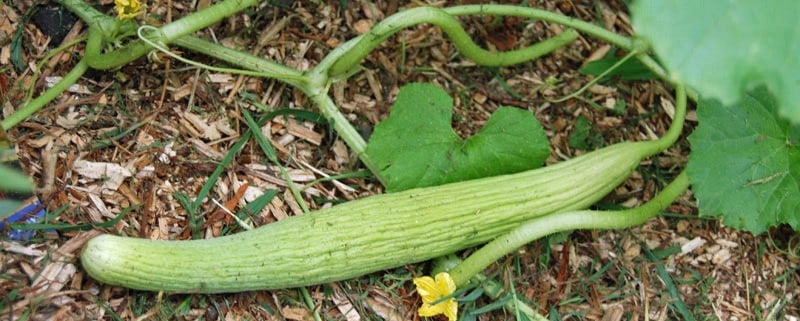Unleash the flavor of the past with heirloom seeds. Find out how these seeds can bring back memories of delicious, homegrown produce.
Oaxan Sopa de Tomate con Albondigas
One of my favorite Mexican cookbooks is titled Seasons of My Heart, by Susana Trilling. Susana was a chef and owner of a restaurant in New York City and also owned a very successful catering business. She left all of this to pursue her ethnic roots in Mexico around Oaxaca, sharing the food, culture and traditions of the cooking of the region. She wrote this cookbook to showcase the native foods that are not well known outside the region. Seasons of My Hearthas become hard to find but is well worth pursuing once you do find it.
Today I’m going to share a recipe called Albóndigas, or meatball soup. Many people are familiar with Albóndigas as a clear broth with a couple of meatballs in it as an appetizer or first course. This particular soup is more rural in nature, with the broth enriched by the onions and tomato puree. Many people are are amazed to find that this is “Mexican food”, as it doesn’t have the characteristic emphasis on chiles and heat that most Americans are accustomed to seeing in Mexican food. This is one of those perfect hearty winter soups that has an abundance of rich and savory flavors. Make extra, as this soup keeps exceptionally well and will prove to be very popular.
Oaxan Sopa de Tomate con Albóndigas
For the meatballs:
- 1 1/4 pounds ground sirloin
- 1 teaspoon freshly ground black pepper
- 1/2 teaspoon salt
- 1/4 cup sunflower or vegetable oil
- 1 teaspoon mild chile powder
- 1 teaspoon ground cumin
For the soup:
- 4 cups beef stock
- 1 1/2 medium white onions, finely chopped
- One large leek, halved lengthwise and thinly sliced
- 1 tablespoon finely chopped garlic
- 1 1/2 teaspoons ground black pepper
- 3 bay leaves
- 5 cups thick tomato puree
- 1 1/2 teaspoons salt
- 1 tablespoon finely chopped fresh parsley
- 1 tablespoon finely chopped garlic chives
- In a medium bowl, mix the ground beef with the pepper, salt, cumin and chili powder.
- Shape the mixture into tiny meatballs about the size of black cherries.
- In a heavy 4 quart stockpot, heat the oil over medium to high heat and brown the meat balls on all sides, for about 2 minutes, in small batches without crowding them.
- Remove from the pan and set aside.
- If there is extra oil in the stock pot, remove it, leaving about 2 tablespoons.
- Fry the onions and leek until they’re soft over medium heat, 4 to 6 minutes.
- Add the garlic and season with the pepper and bay leaves.
- And the beef broth, tomato puree, and meatballs.
- Lower the heat to a slow simmer, cover, and cook for 1 1/2 hours.
- Add the salt, parsley and chives and cook 5 to 10 minutes longer.
- Serve with garlic toast.
During the winter months, or cold weather, this is the type of soup that is very easy to make when you’re cooking out of your freezer with ingredients that you have prepared beforehand. Making beef broth or beef stock is somewhat time consuming, but does not require constant attention and can be made in large batches, saving time later on. Likewise, making tomato puree from extra tomatoes when your garden is in the height of production gives you a rich, fresh tomato taste in the dead of winter.
Please give this soup a try, and let us know what you think!
One of the things that I most enjoyed about The Dirty Life is that it is a story about a real woman in today’s world. She begins as a savvy New York freelance writer, and winds up as a deeply devoted farm wife. This journey is not something that she consciously chooses in the beginning, but becomes something that takes hold of her and pulls her in an entirely new direction.
She is completely unprepared for her first meeting with the farmer who becomes her husband, but soon realizes that there are deeply rooted forces in her life that cannot be ignored. To her credit, she does not run away from a completely alien experience on her first meeting with Mark, her future husband. She believes that she is happy with her New York life, but soon realizes that the simple farm life offers a deep soul satisfying choice that is completely unmatched in the superficial, upwardly mobile city. This is not to say that the farm life is easier than trying to make a living in the city, as it is much more difficult physically and emotionally yet is in many ways more rewarding.
Kristin tells the story mainly from her point of view, yet offers insights into the conviction that drives her husband on the farm. She tells her story in a real, unglossy way that shows both the beauty and the heartache of farm life. The audacity of two young, somewhat inexperienced people in starting a farm that supplies all of the food for a small community of subscribers comes through clearly. Food is a focal point of the book; from the fresh, vibrant produce of the farm to the upscale cafes in New York.
Part of the core of this book is about chasing a dream and the joys and frustrations experienced in the chase. Another is a young woman’s journey into a deep relationship that she had hoped for but never expected to have. Yet another shows the daily challenges involved in growing our food. Watching the success happen only after much hard work is refreshing to see in today’s age of expected instant gratification.
This is an inspirational yet cautionary tale for anyone thinking of taking up farming as a profession. She clearly shows that success is very possible, but the work is hard, long and arduous. Watching her travel the path to the dedication needed to make both her marriage and the farm work is part of what keeps this book open and approachable.
A very enjoyable read, and one that’s worth going back to several times.
I’ve often wondered why the Armenian Cucumber was always the preferred choice of cucumber for my grandmother. She said it was the best tasting cucumber and that it was “burpless” which was important to her. I know sometimes folks are very sensitive to eating raw cucumber because of that burping issue.
What causes the burping? Some foods are more prone to producing gas, such as onions, celery, and cucumbers. Foods high in fiber have more of the “gas” forming characteristics which can cause that burping issue. But back to the Armenian Cucumber, which is really a melon (Cucumis melo var. flexuosus) is why we don’t burp. There is a funny group of melons that botanically are melons but are much similar in characteristic to the cucumber (Cucumis sativus).
I wanted to know more about this Armenian Cucumber, so I referred again to Fearing Burr’s Field and Garden Vegetables of America to read up on the Snake or Serpent Cucumber (AKA Armenian Cucumber).
Though generally considered as a species of cucumber, this plant should properly be classed with melons. In its manner of growth, foliage, flowering, and in the odor and taste of the ripened fruit, it strongly resembles the muskmelon. The fruit is slender and flexuous; frequently measuring more than three feet in length; and is often gracefully coiled or folded in a serpent-like form. The fruit is sometimes pickled in the manner of the Common Cucumber, but is seldom served at table sliced in its crude state. It is generally cultivated on account of its serpent-like form, rather than for its value as an esculent (edible). Well-grown specimens are quite attractive; and, as curious vegetable productions, contribute to the interest and variety of horticultural exhibitions.
Interesting that in 1865 not much was mentioned about the “burpless” quality that the Armenian Cucumber is known for today. I would have to say it is much tastier than just an ornamental for the local county fair!
Give this recipe a try with your Armenian Cucumbers!
Peasant Salad
- 2 tomatoes cut in wedges
- 2 cucumbers, sliced
- 1 small red onion, sliced
- ½ c olive oil
- ½ c red wine vinegar
- 1 Tbsp lemon juice
- Dried oregano, to taste
- Salt and ground black pepper, to taste
- ½ c Kalamata olives, chopped
- ½ c crumbled feta cheese or chopped anchovy fillets (optional)
- Combine tomatoes, cucumbers and onions in bowl.
- Whisk olive oil with vinegar, lemon juice, oregano, salt and pepper. Add to vegetables; toss to coat. Top with olives.
- If desired, add feta or anchovies.
Makes 4 servings
Recipe Tip! Redmond Salt is the best tasting salt to use with fresh garden vegetables. A sprinkle on a fresh cut tomato or on a hard-boiled egg is heaven.

 © 2024 Terroir Seeds | Underwood Gardens
© 2024 Terroir Seeds | Underwood Gardens

